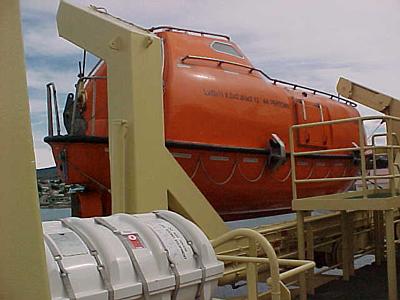
|
|
2 March, 2000
As on any vessel, safety is the number one priority aboard the
<italic>Gould . </italic> Before leaving the dock we all practiced donning
our life jackets and survival suits. In the cold Antarctic water, human
survival time is about 15 minutes in clothes, with a survival suit the time
is extended to 40 minutes. We completed an "abandon ship" drill and
practiced getting into the life boats. The life boats are completely
covered and have a small motor of their own. Inside there are safety
harnesses to strap you in, but very little extra room. We then reviewed
fire and "man overboard procedures. The ship's crew practice "man
overboard" drills and have their response time down to 8 minutes. In the
cold Antarctic water this could mean the difference between life and death.
An electronic problem with the port engine has delayed our departure. We
cast off the pier and anchored out in the Punto Arenos harbor to await the
technician. Making use of the extra time, the two principle investigators,
Dr. Craig Smith and Dr. Dave DeMasters held a science meeting where we
discussed the "big picture" of all the research being conducted on the
vessel. Most of the research is connected to determining the effect of the
annual nutrient flux (change from very high to very low) on the metabolism
and growth of Antarctic organisms. The 24 hour sunlight of the austral
summer creates a phytoplankton bloom which provides a great food source for
other organisms. The harsh winter results in very low available nutrients.
The question is what do organisms do? Do they go into a hibernation? Is
there some way that the nutrients are preserved and still remain available?
Does this change in nutrient availability have a direct relationship to
organism growth patterns? The data collected by scientists from many
different disciplines: chemistry, biology, geology, oceanography... will
help to answer these questions.

Researcher Bryce Glasser donning his survival suit


Contact the TEA in the field at
.
If you cannot connect through your browser, copy the
TEA's e-mail address in the "To:" line of
your favorite e-mail package.
|
